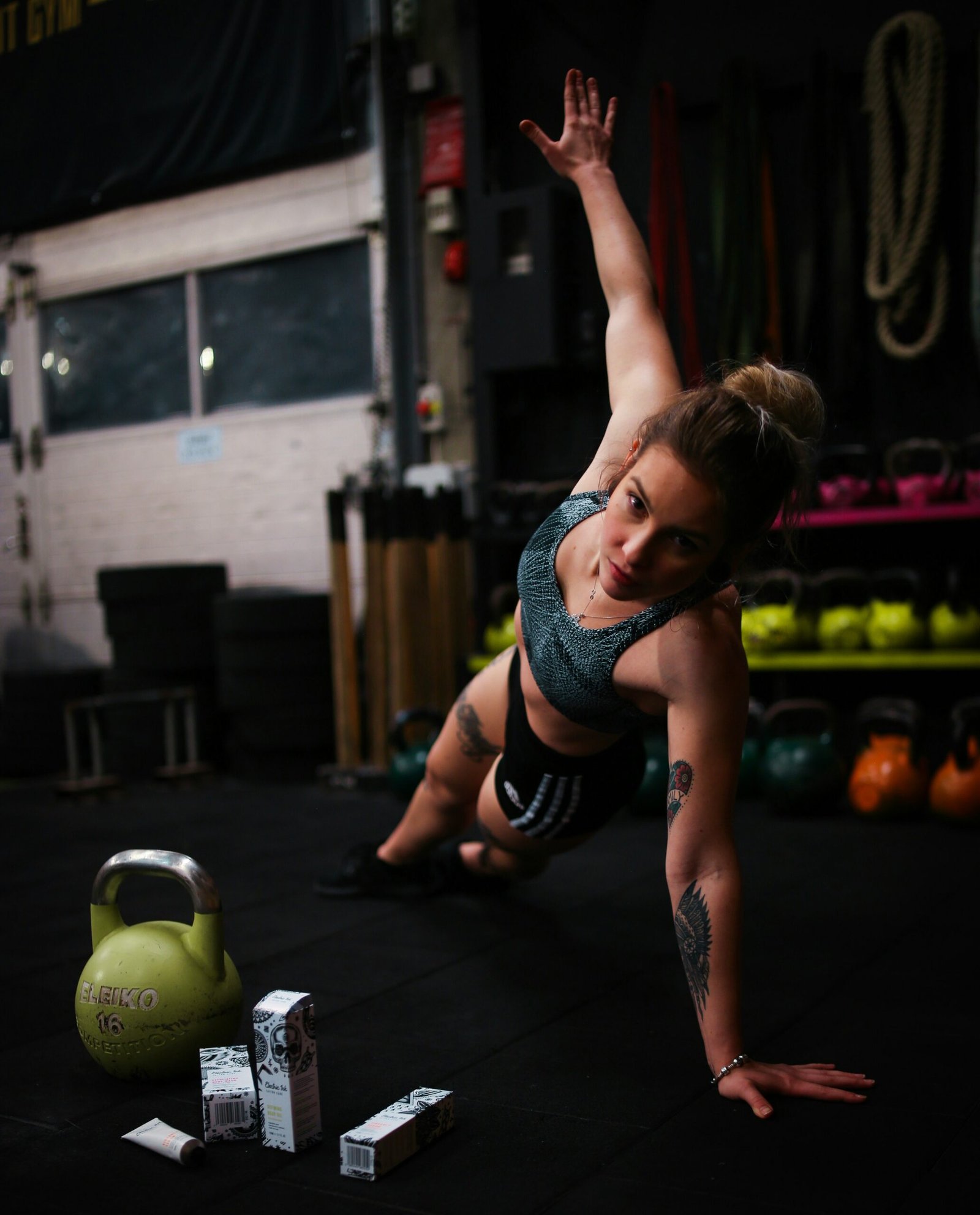Are you ready to revolutionize your fitness journey? Dive into the world of CrossFit gym exercises and discover a whole new level of strength, endurance, and vitality. Whether you’re a seasoned athlete or a beginner looking to kick-start your fitness routine, CrossFit offers a dynamic and challenging approach to training that will leave you feeling empowered and accomplished.
Welcome to the world of CrossFit gym exercises, where every workout is a chance to push your limits and achieve greatness. In this article, we’ll explore the fundamentals of CrossFit gym exercises, from its origins to its many benefits, essential equipment, basic movements, and more. Whether you’re looking to build strength, improve endurance, or enhance overall fitness, CrossFit offers a versatile and exciting approach to achieving your goals.
What is CrossFit?
CrossFit is a high-intensity fitness program that incorporates elements from various sports and exercise modalities, including weightlifting, gymnastics, and cardiovascular conditioning. The goal of CrossFit is to develop a broad, general fitness that prepares individuals for any physical challenge, whether in the gym or in everyday life.
Benefits of CrossFit
CrossFit offers a multitude of benefits, including:
- Improved Strength: Through functional movements and weightlifting exercises, CrossFit helps you build strength across multiple muscle groups.
- Enhanced Cardiovascular Endurance: High-intensity workouts elevate your heart rate, improving cardiovascular health and stamina.
- Increased Flexibility: Dynamic movements promote flexibility and range of motion, reducing the risk of injury.
- Community Support: CrossFit gyms foster a supportive community atmosphere, motivating members to push harder and achieve their goals together.
Essential CrossFit Equipment
To get started with CrossFit, you’ll need some essential equipment, including:
- Barbell: Used for weightlifting exercises such as squats, deadlifts, and presses.
- Kettlebell: Ideal for swings, snatches, and other dynamic movements.
- Pull-Up Bar: Essential for pull-ups, chin-ups, and other upper body exercises.
- Jump Rope: Great for improving coordination, agility, and cardiovascular fitness.
- Medicine Ball: Perfect for wall balls, slams, and core exercises.
Basic CrossFit Movements
In CrossFit, there are several foundational movements that form the basis of many workouts, including:
- Squats: Essential for lower body strength and mobility.
- Deadlifts: Builds strength in the posterior chain and improves overall functional fitness.
- Push-Ups: Targets the chest, shoulders, and triceps while also engaging the core.
- Pull-Ups: Strengthens the back, arms, and grip.
- Burpees: A full-body exercise that combines strength, cardio, and coordination.
Sample CrossFit Workout
Here’s a sample CrossFit workout to get you started:
- Warm-Up: 5 minutes of jogging or jumping rope.
- Strength Portion: 5 sets of 5 reps of back squats.
- Conditioning: Complete 3 rounds of 10 pull-ups, 15 push-ups, and 20 air squats as fast as possible.
- Cool Down: Stretching and foam rolling for 10 minutes.
Common Mistakes to Avoid
When starting CrossFit, it’s important to avoid these common mistakes:
- Overtraining: Listen to your body and allow for adequate rest and recovery.
- Neglecting Form: Focus on proper technique to prevent injuries.
- Ignoring Mobility Work: Incorporate stretching and mobility exercises into your routine.
- Skipping Warm-Up/Cool Down: Proper warm-up and cool-down are essential for injury prevention.
- Not Scaling Workouts: Modify workouts to match your fitness level and abilities.
Injury Prevention Tips
To stay safe and injury-free during CrossFit workouts, follow these tips:
- Start Slowly: Gradually increase intensity and volume to avoid overexertion.
- Focus on Technique: Prioritize proper form over lifting heavier weights.
- Pay attention to your body: If something feels off, don’t force it.
- Cross-Train: Incorporate a variety of exercises to prevent overuse injuries.
- Rest and Recover: Allow for adequate rest days and prioritize sleep and nutrition.
Nutrition for CrossFit
Proper nutrition is key to maximizing your performance and recovery in CrossFit. Focus on:
- Balanced Diet: Include lean protein, complex carbohydrates, healthy fats, and plenty of fruits and vegetables.
- Hydration: Drink plenty of water before, during, and after workouts to stay hydrated.
- Pre-Workout Fuel: Eat a light meal or snack containing carbs and protein 1-2 hours before exercising.
- Post-Workout Recovery: Refuel with a combination of protein and carbohydrates to aid muscle repair and replenish glycogen stores.
Tracking Progress
Keep track of your CrossFit journey by:
- Logging Workouts: Record your workouts, weights, and times to track progress over time.
- Setting Goals: Establish clear, achievable goals to keep you motivated and focused.
- Tracking Performance Metrics: Monitor metrics such as strength gains, endurance improvements, and body composition changes.
- Celebrating Milestones: Acknowledge and celebrate your achievements along the way to stay motivated.
Finding the Right CrossFit Gym
When choosing a CrossFit gym, consider:
- Location: Choose a gym that’s convenient for you to access regularly.
- Facilities: Look for well-equipped facilities with knowledgeable coaches.
- Community Atmosphere: Find a gym with a supportive and inclusive community atmosphere.
- Trial Classes: Take advantage of trial classes to experience the gym environment firsthand.
- Cost: Consider membership fees and any additional costs for classes or equipment.
CrossFit for Beginners
If you’re new to CrossFit, start with:
- Fundamentals Class: Take a fundamentals or introductory class to learn basic movements and techniques.
- Focus on Form: Prioritize proper form and technique over intensity or weight.
- Scale Workouts: Modify workouts as needed to match your current fitness level.
- Ask Questions: Don’t hesitate to ask questions and seek guidance from coaches or more experienced members.
- Be Patient: Progress takes time, so be patient with yourself and enjoy the journey.
CrossFit for Advanced Athletes
For seasoned athletes aiming to elevate their fitness regimen:
- Set New Goals: Challenge yourself with specific, measurable goals to strive towards.
- Increase Intensity: Incorporate advanced techniques and heavier weights into your workouts.
- Experiment with Specialized Programs: Explore specialized programs or competitions tailored to your interests and strengths.
- Cross-Training: Supplement CrossFit workouts with additional training modalities to enhance overall fitness and performance.
- Listen to Your Body: Pay attention to signs of overtraining or burnout and adjust your training accordingly.
Conclusion
Embark on your CrossFit journey with confidence and determination. Whether you’re a beginner or an advanced athlete, CrossFit offers a dynamic and rewarding approach to fitness that will challenge and inspire you every step of the way. Join the CrossFit community today and unleash your full potential!
FAQs
Q: What is the best time to do CrossFit workouts? A: The best time for CrossFit workouts depends on your personal schedule and preferences. Some people prefer early morning workouts to start the day energized, while others prefer evening sessions to unwind after work. For seasoned athletes aiming to elevate their fitness regimen
Q: Is CrossFit suitable for beginners? A: Yes, CrossFit can be scaled to accommodate beginners of all fitness levels. Most CrossFit gyms offer introductory classes or programs designed specifically for newcomers to learn basic movements and techniques in a supportive environment.
Q: Can I do CrossFit at home? A: While it’s possible to do CrossFit workouts at home with minimal equipment, joining a CrossFit gym provides access to specialized equipment, knowledgeable coaches, and a supportive community atmosphere that can enhance your experience and results.
Q: Will CrossFit make me bulky? A: CrossFit focuses on functional fitness and overall health rather than solely on building muscle mass. While you may experience muscle growth as a result of CrossFit training, it’s unlikely to make you “bulky” unless combined with specific dietary and training protocols aimed at muscle hypertrophy.
Q: How often should I do CrossFit workouts? A: The frequency of CrossFit workouts depends on your fitness goals, schedule, and recovery ability. Beginners may start with 2-3 sessions per week, gradually increasing frequency as fitness improves. Pay attention to your body and ensure you take enough rest and recovery time between workouts. CrossFit gym exercises









